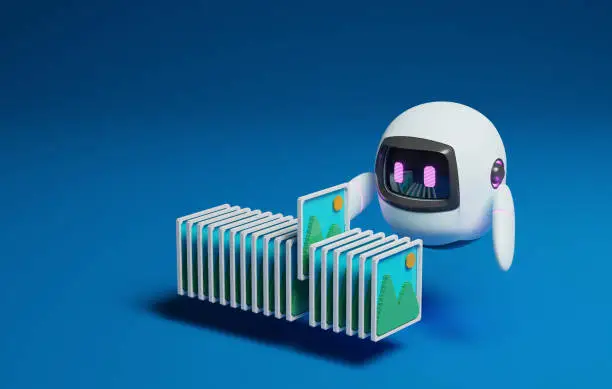Artificial Intelligence (AI) has made incredible strides in recent years, enabling creative tools that were once unimaginable. One of the most fascinating developments is the ability to generate images based on text prompts. This technology allows anyone to turn their imagination into visual art simply by typing a description. In this article, we will guide you through the process of creating your own to Create Your Own AI Image Generator from Text for Free, exploring various platforms and tools that empower you to build and customize your own creative assistant.
What is AI Image Generation from Text?
AI image generation from text, also known as text-to-image synthesis, is a technology that allows machines to generate visual content based on a written description. These systems use deep learning models, such as Generative Adversarial Networks (GANs) or more advanced techniques like CLIP+VQGAN, to interpret and transform textual input into images. For example, typing “a futuristic city skyline at sunset” can generate a unique image of what the AI believes a futuristic city at sunset might look like.
Why Build Your Own?
While there are already several popular AI image generators available, creating your own custom generator can offer several advantages:
- Customization: Tailor the generator to your specific needs and creative vision.
- Learning: Gain valuable experience with AI and machine learning techniques.
- Control: Have full control over how the model is trained and applied.
- Cost-Efficiency: With free tools available, you can experiment without worrying about costs.
Let’s take a look at how you can get started with building your own AI image generator from text, using free resources and platforms.
Step-by-Step Guide to Building Your Own AI Image Generator
Step 1: Choose Your Platform and Tools
There are several open-source platforms and libraries that allow you to build your own AI image generator. Some of the most popular options are:
1. DALL·E Mini (Craiyon)
- DALL·E Mini, now known as Craiyon, is a lightweight version of OpenAI’s DALL·E model. It is an easy-to-use web tool that generates images from text prompts for free. While it doesn’t offer the full capability of DALL·E 2 or other more complex models, it’s a great starting point for anyone who wants a simple introduction to AI image generation.
- How to use: Simply visit the Craiyon website, enter your text prompt, and let the AI generate the images. You can save and refine the results as you like.
2. DeepAI Text to Image API
- DeepAI offers a free API for text-to-image generation. This tool provides a simple way to turn text descriptions into visual content. It’s ideal for developers looking to integrate AI image generation into their applications or websites.
- How to use: You will need some basic programming knowledge to interact with the DeepAI API. Once you sign up for an account and obtain your API key, you can use it to send text prompts and receive image data in return.
3. RunwayML
- RunwayML is a platform designed for creatives and developers, offering a range of AI tools for various purposes, including text-to-image generation. It provides an easy interface and pre-built models that allow you to start generating images with minimal setup.
- How to use: You can use the platform for free with certain limitations. RunwayML is user-friendly and even supports real-time collaboration. You can either upload text prompts directly or integrate it with other creative software like Adobe Photoshop or Unity.
4. Stable Diffusion
- Stable Diffusion is an open-source AI model for generating detailed images from text. It has become increasingly popular for its high-quality outputs and flexibility. It can be run locally on your computer if you have the right hardware (e.g., a powerful GPU), or you can use cloud platforms that host the model.
- How to use: For local installation, you’ll need some technical knowledge and resources. Alternatively, platforms like DreamStudio (the official web version) let you generate images for free with a limited amount of credits, after which you may need to purchase additional credits.
5. Artbreeder
- Artbreeder is another creative tool that blends AI with human input. It allows you to create images by mixing different genes (attributes) of existing images or generating new images from text. While it doesn’t focus solely on text-to-image generation, it is a great option for refining generated artwork.
- How to use: Create an account, explore the existing art, and experiment with various settings to create new images based on text prompts.
Step 2: Familiarize Yourself with the Basics of AI and Image Generation
While many of the tools above offer user-friendly interfaces, it’s still important to understand the basic concepts behind AI image generation. Here are a few key terms and concepts to familiarize yourself with:
- Generative Adversarial Networks (GANs): These are the underlying technology behind many AI image generation tools. GANs consist of two neural networks—one generates images, and the other evaluates their realism, improving over time.
- CLIP (Contrastive Language-Image Pre-training): This is a model developed by OpenAI that connects images and text, allowing AI to understand and generate images based on textual input.
- Latent Space: This refers to the compressed space where the features of images are represented. Text-to-image models explore this space to generate visuals based on textual descriptions.
Learning more about these technologies will help you better understand the results and limitations of the AI models you’re using.
Step 3: Start Experimenting with Text Prompts
Once you’ve chosen your platform, it’s time to start generating images! One of the most exciting aspects of text-to-image AI is experimenting with different types of prompts. Be specific with your descriptions and think about:
- Details: Add color, lighting, environment, and emotional tone.
- Style: Specify artistic styles, such as “watercolor” or “cyberpunk”.
- Mood: Set the atmosphere of the image with terms like “calm,” “chaotic,” or “dreamy”.
Experimenting with different prompts will help you see the full range of possibilities and fine-tune how the AI interprets your text.
Step 4: Refine Your Results
In most cases, the first few generated images might not perfectly match your expectations. That’s okay! Many platforms allow you to refine or iterate on your results. You can adjust the text prompts, tweak the settings, or use other tools to fine-tune the output.
If you’re using a tool like Stable Diffusion, you can even experiment with various parameters such as image size, detail level, or creative control. Some platforms also support “inpainting,” allowing you to modify specific areas of an image, which can help refine results further.
Step 5: Share Your Creations and Learn from Others
Once you have created some images, share them with friends, colleagues, or the creative community. Platforms like Reddit, Discord, or Twitter have active communities of AI art creators who can offer feedback, tips, and new ideas for prompts and techniques.
Joining these communities can also help you stay updated on new tools, models, and techniques for AI image generation.
Conclusion
Creating your own AI image generator from text can be a fun and rewarding project, especially with the numerous free resources available today. Whether you’re a developer, artist, or just a creative person looking to experiment, the tools and platforms outlined in this guide can help you bring your text prompts to life.






